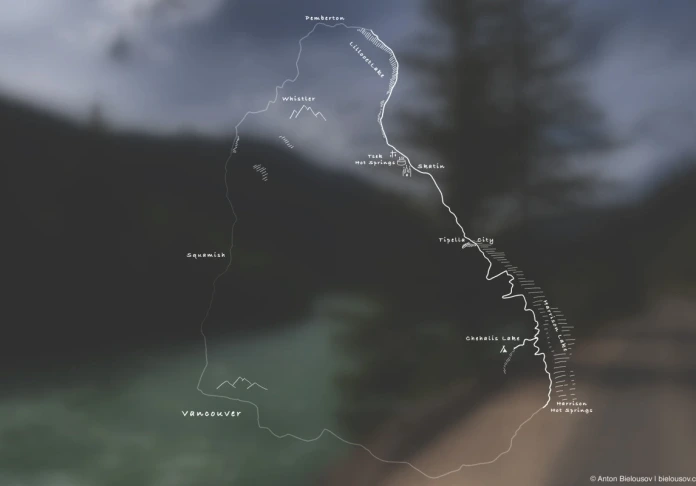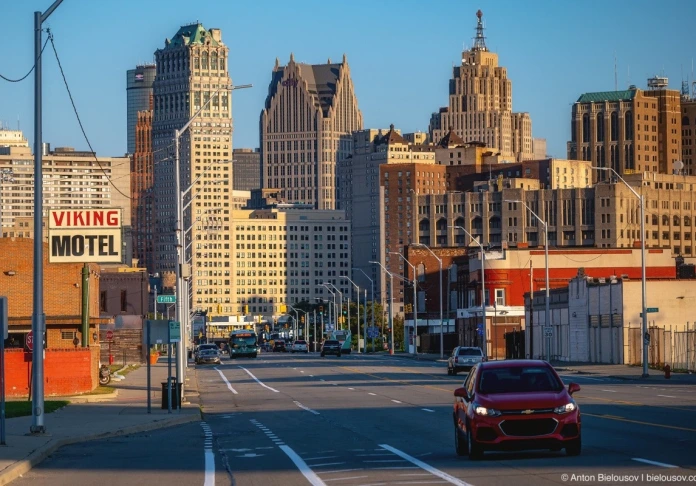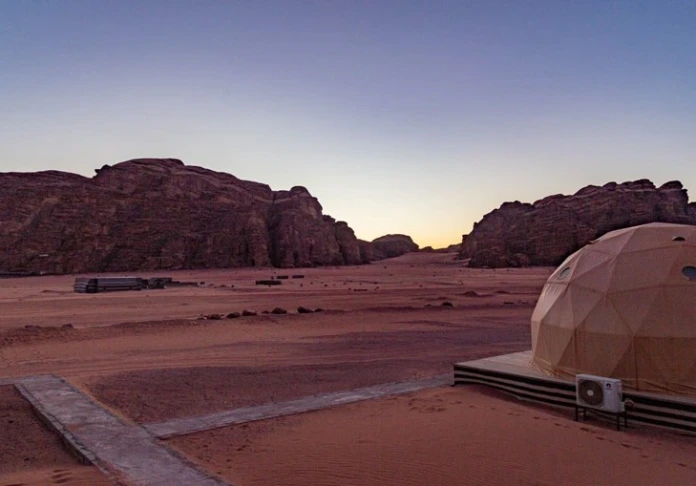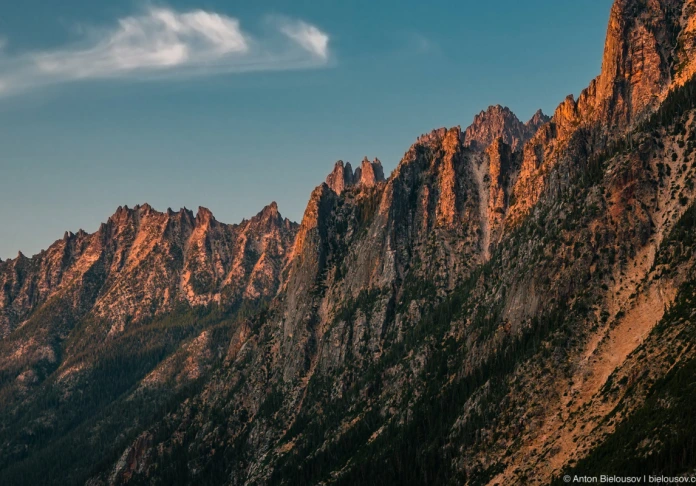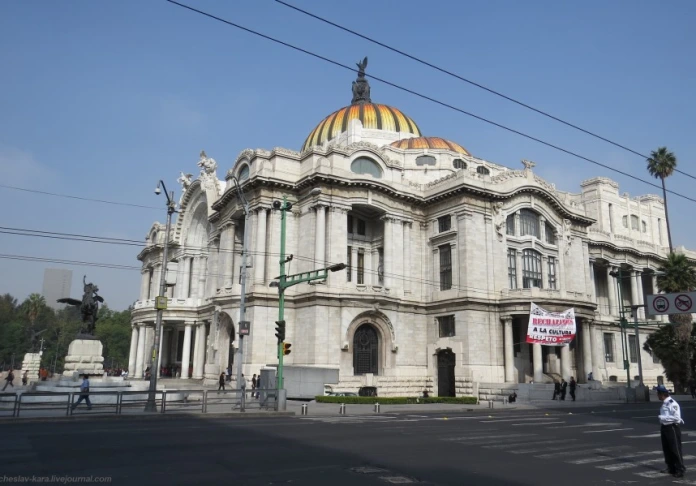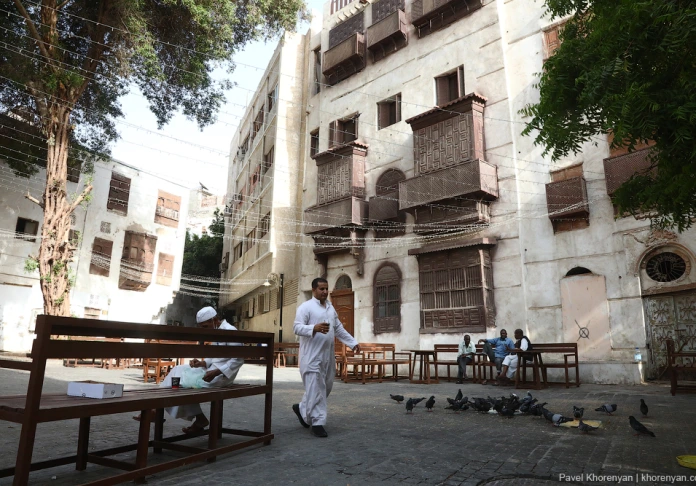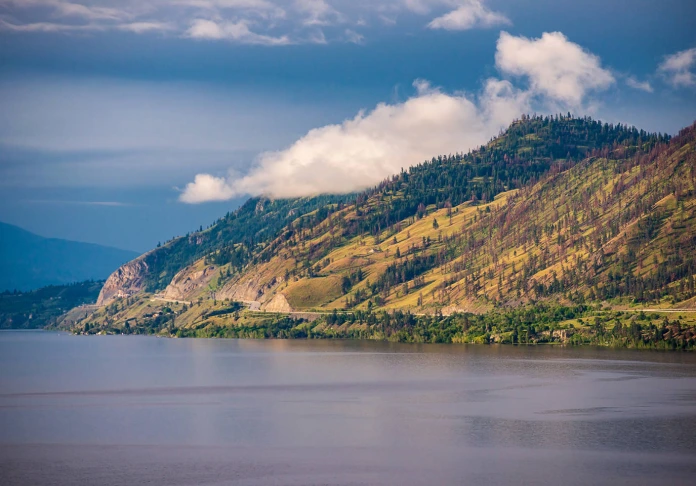Italy
Bergamo is the city above
The city of Bergamo is located in northern Italy, in the foothills of the Alps, 40 km north-east of Milan. The city is average by Italian standards - 120 thousand inhabitants. It has an interesting topographic feature - it is clearly divided into two parts: the Upper (Citta Alta) and the Lower City (Citta Bassa). The lower part is larger and more modern. But the historical center with the main attractions is located at the top, on a high hill surrounded by fortress walls of the 16th century.
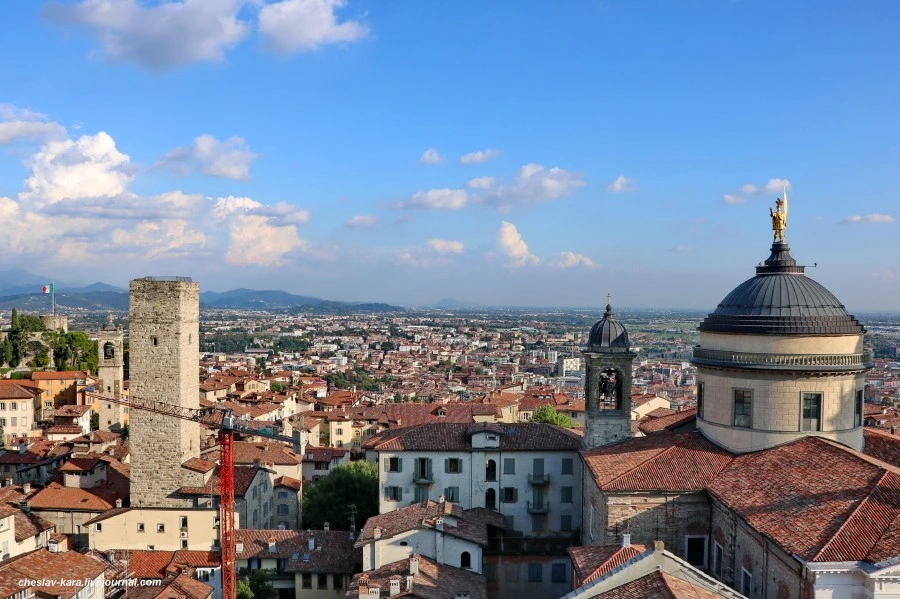
Let's go there (38 photos, October 2019):
You can get to the Upper Town from the railway station by bus N1, or you can also walk: to the lower station of the funicular - 1.2 km in a straight line, without turning anywhere.
Chitta Bassa (Lower City):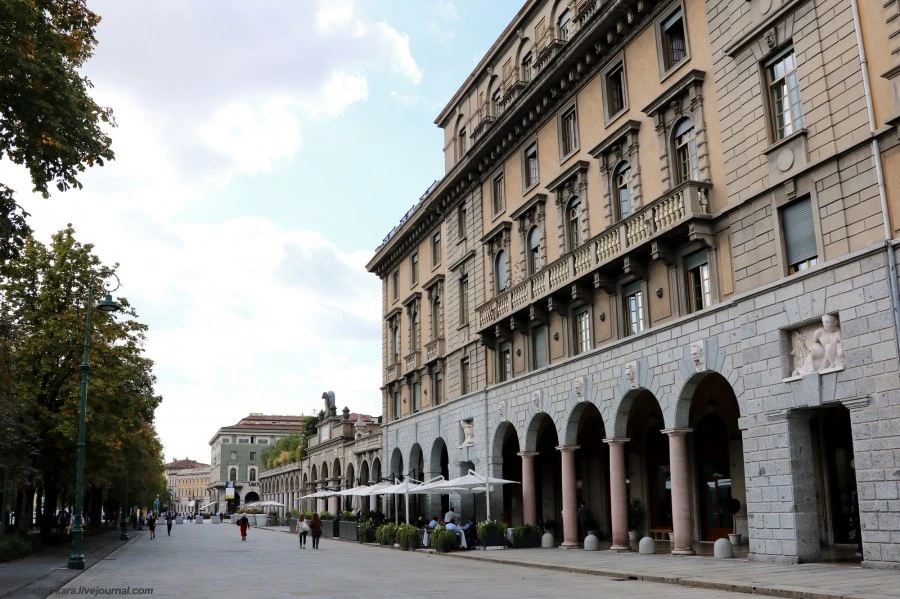
About halfway there is the Church of Saints Bartholomew and Stephen (, 1613-42):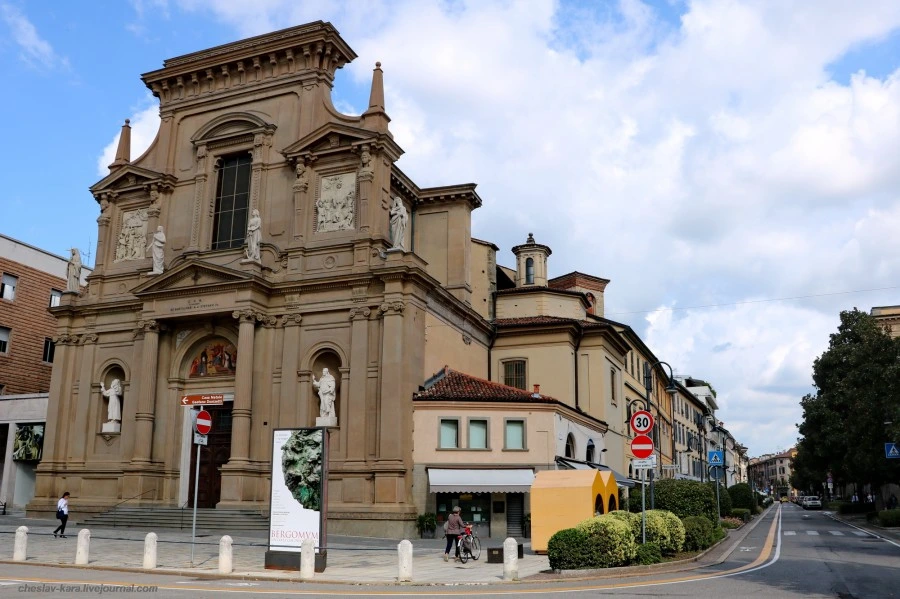
The church has a beautiful baroque interior, but the lighting inside is extremely poor: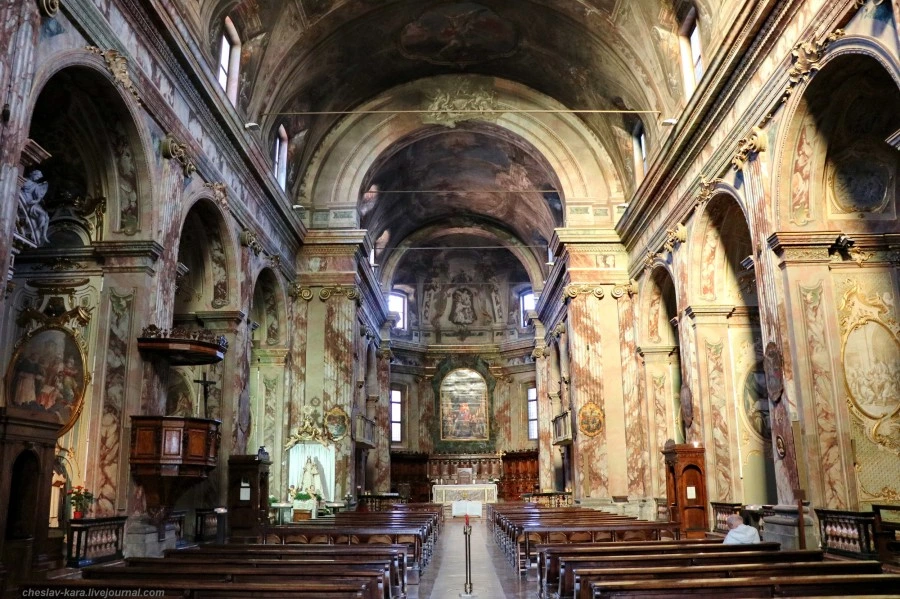
The ceiling is decorated with a huge fresco: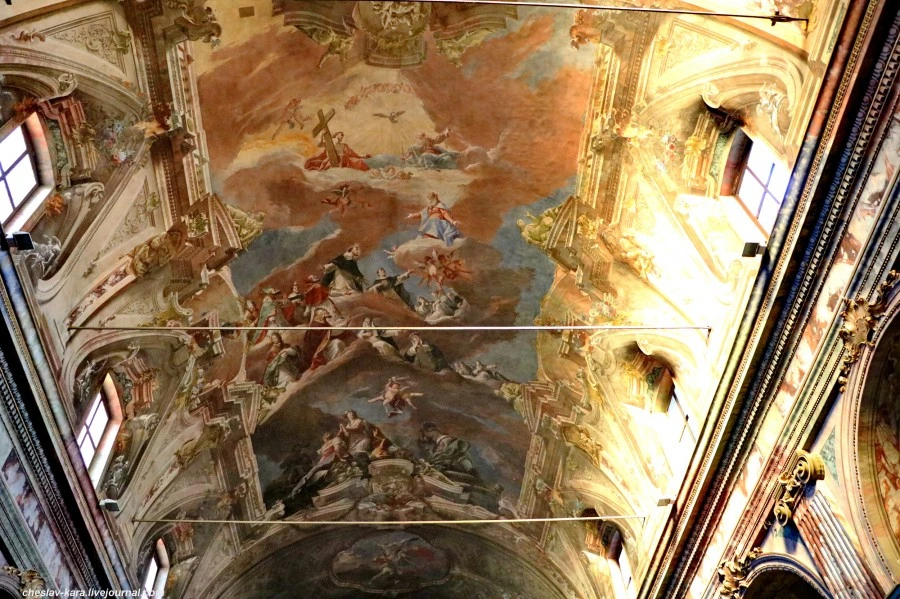
Post Office:
Lower station of the funicular Chitta Alta (; on the opposite side of the Upper Town there is another funicular - Funicolare S. Vigilio)
If you have already bought and activated a bus ticket, then you can also go to the funicular along it. If not, tickets are sold at the box office (it was closed), or in the machine (it was not possible to get any adequate response from him), or in a cafe nearby - by the bartender.
The length of the path is about 200 meters, there are two independent cabins: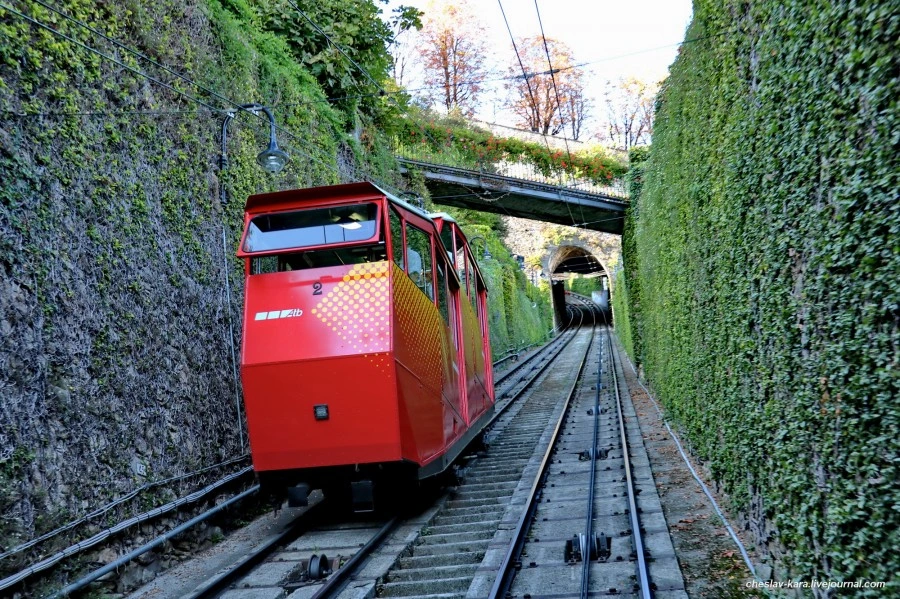
After leaving the upper station of the funicular, you can go either to the right - to the fortress, or straight - to the center.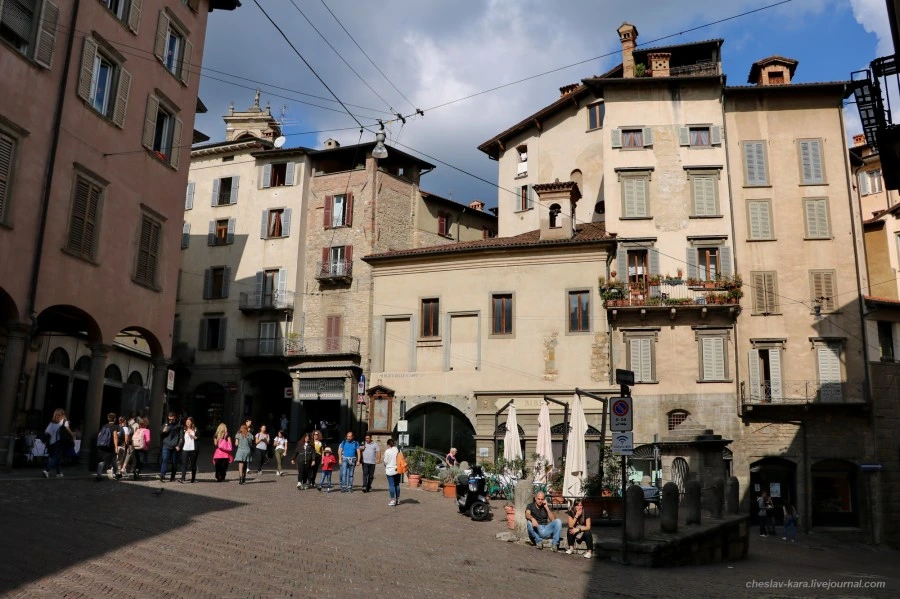
Let's go right first.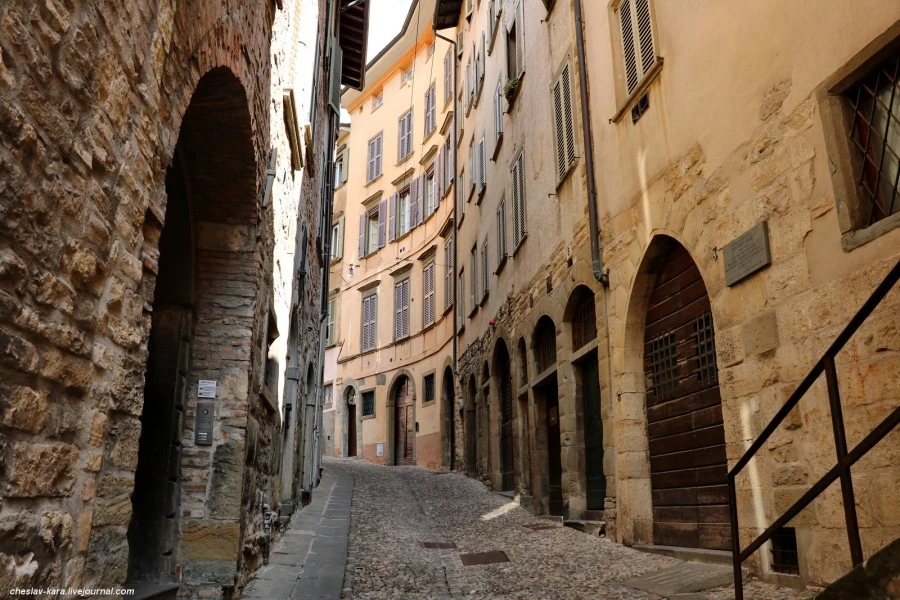
The fortress (which simply means "Bergam rock") was erected in 1331-36. She took part in many armed conflicts up to the 19th century. Completely renovated in 1927-1933.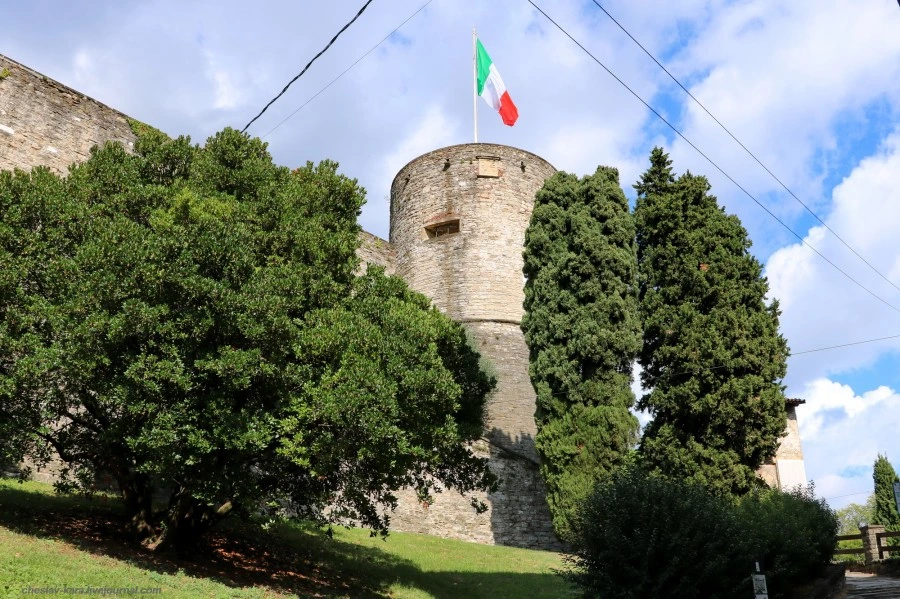
Next to the tower, on the observation deck, there is an exposition of Italian artillery pieces from the period of the First and Second World Wars.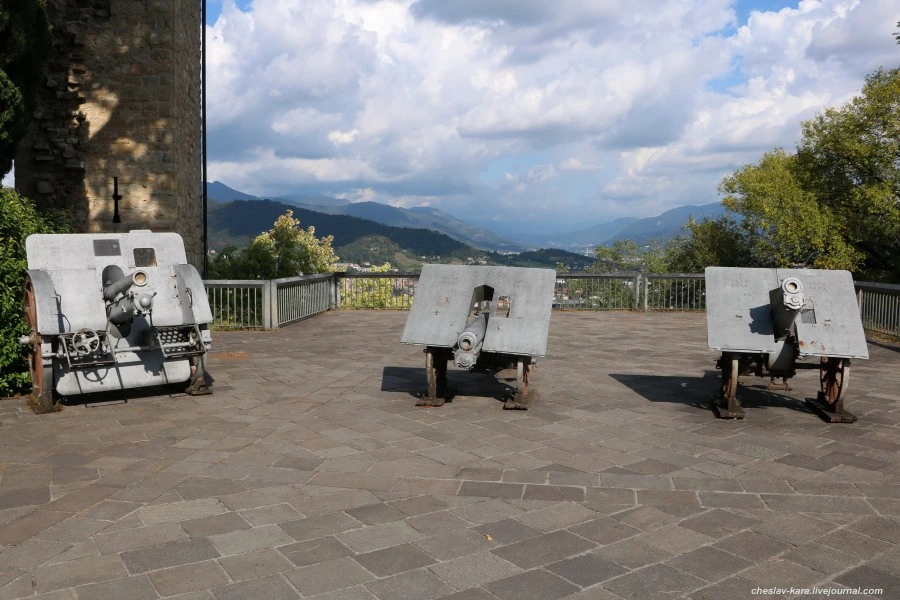
Read more about these guns here.
There is also a well-preserved self-propelled gun Semovente da 75/18 M42 from WWII times (detailed story here).
The fortress is small, almost rectangular in plan, measuring about 35 by 50 meters, the only round tower is located in the southeast corner.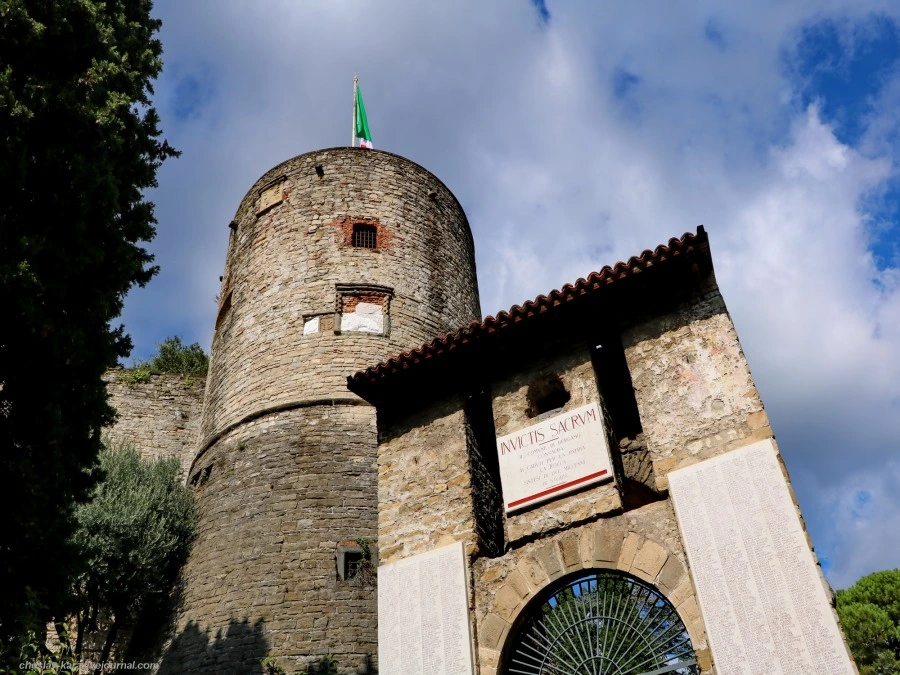
Inside, in the premises of the former barracks, there is the Museum of Resorgimento (the war for the unification of Italy). The museum is small and not particularly interesting for our people, but a ticket to it gives an opportunity to go to the walls of the fortress.
In addition to the barracks-museum, inside the fortress there is only the chapel of St. Euphemia ().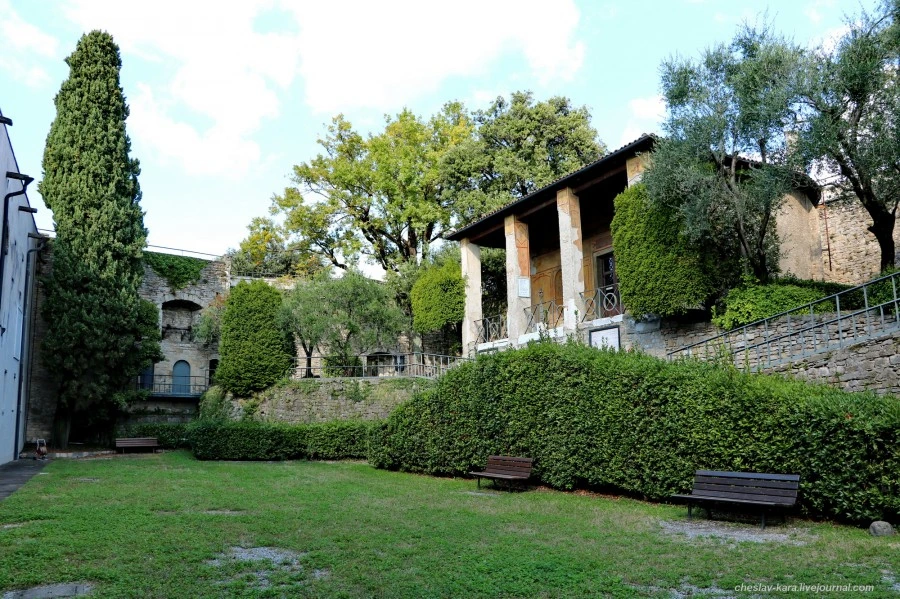
The walls and tower of the fortress offer a wonderful view of the province of Lombardy and the city of Bergamo itself.
View to the north: the foothills of the Alps are visible, on the left - the fortress wall: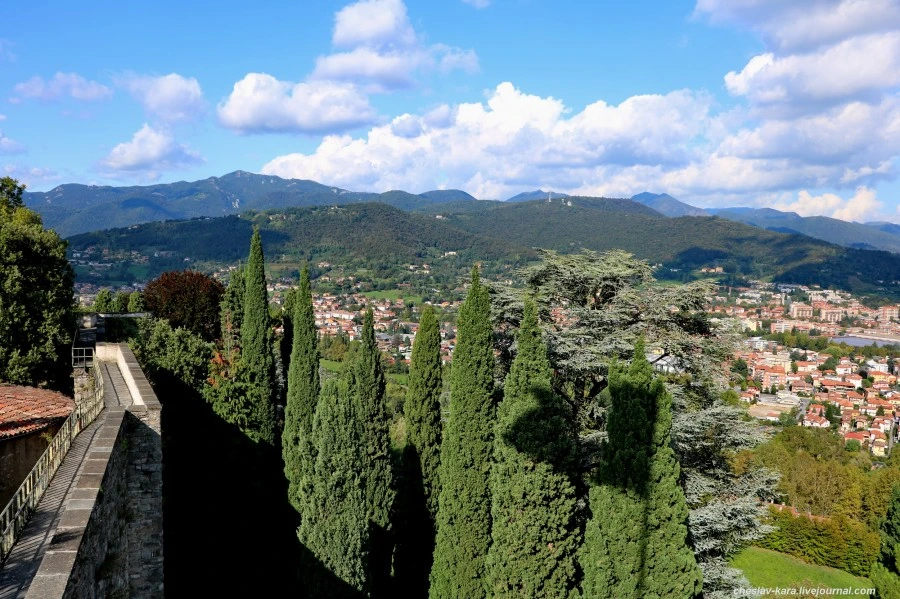
East view: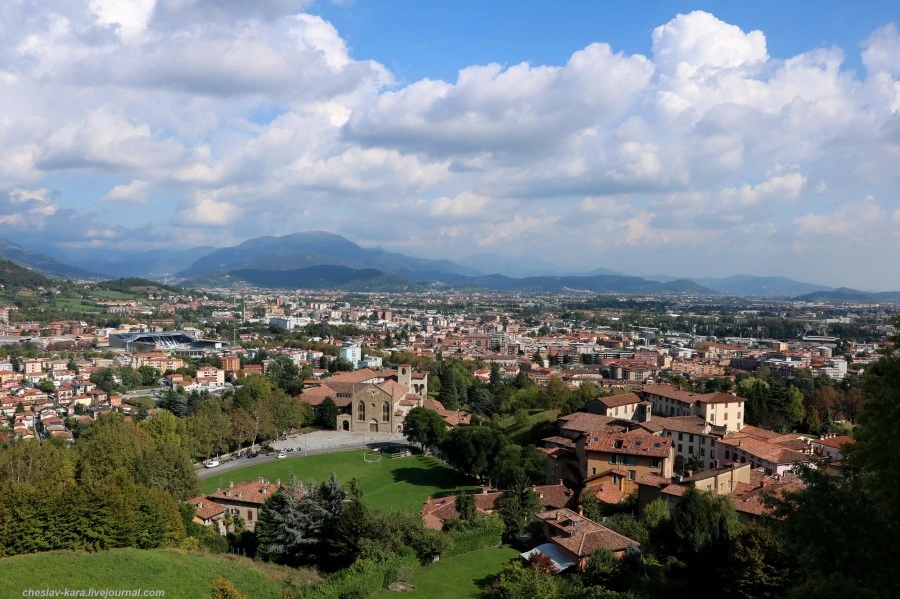
Southwest view, towards the historic center of the Upper Town: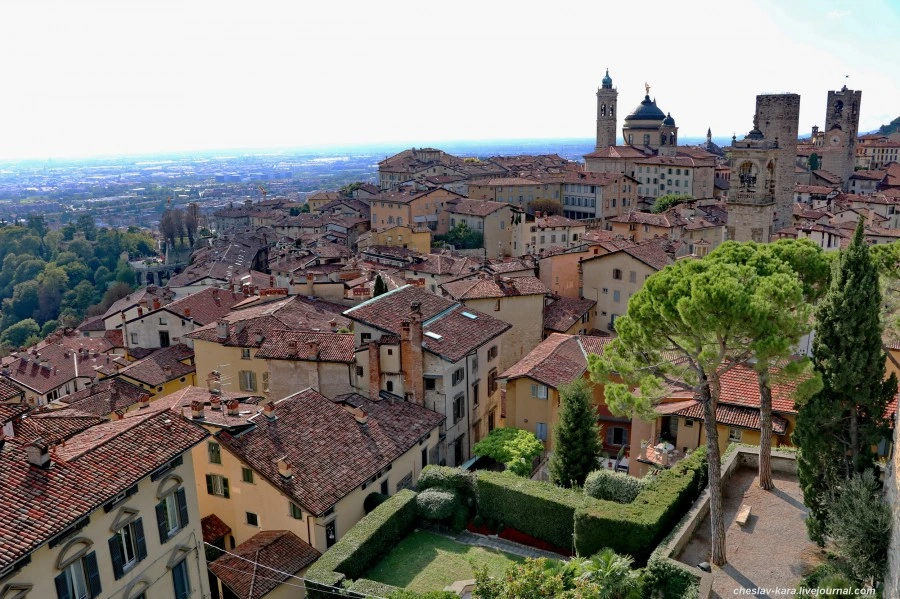
West view: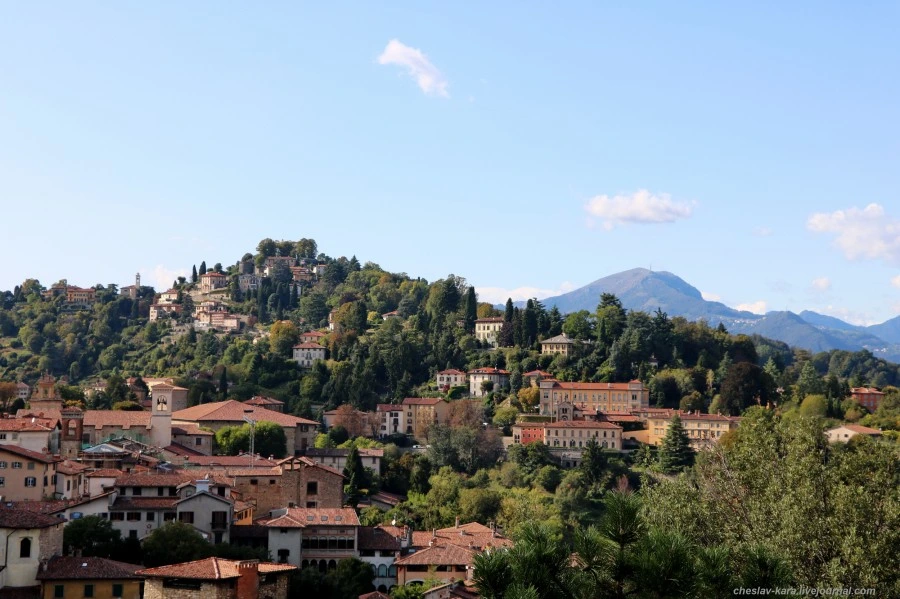
We leave the fortress, go to the center: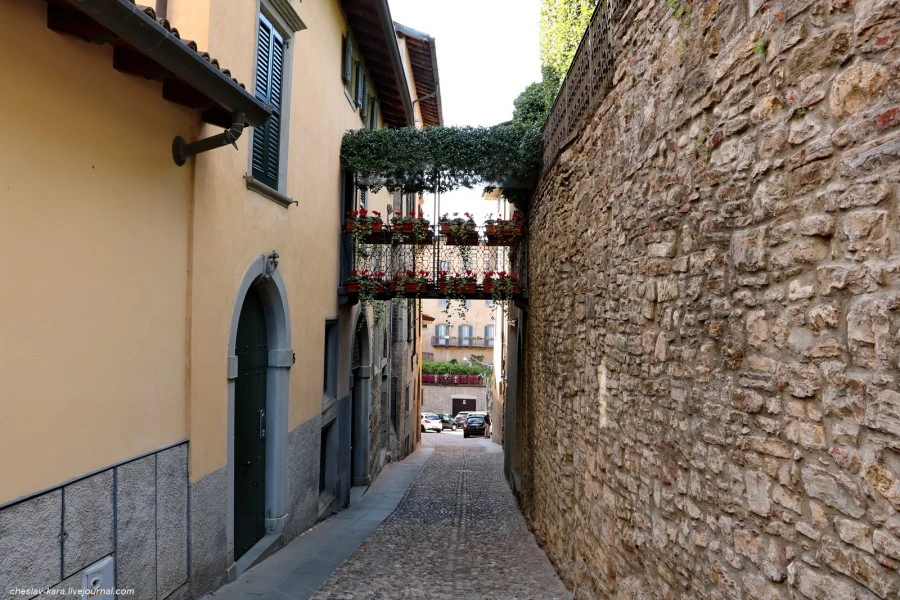
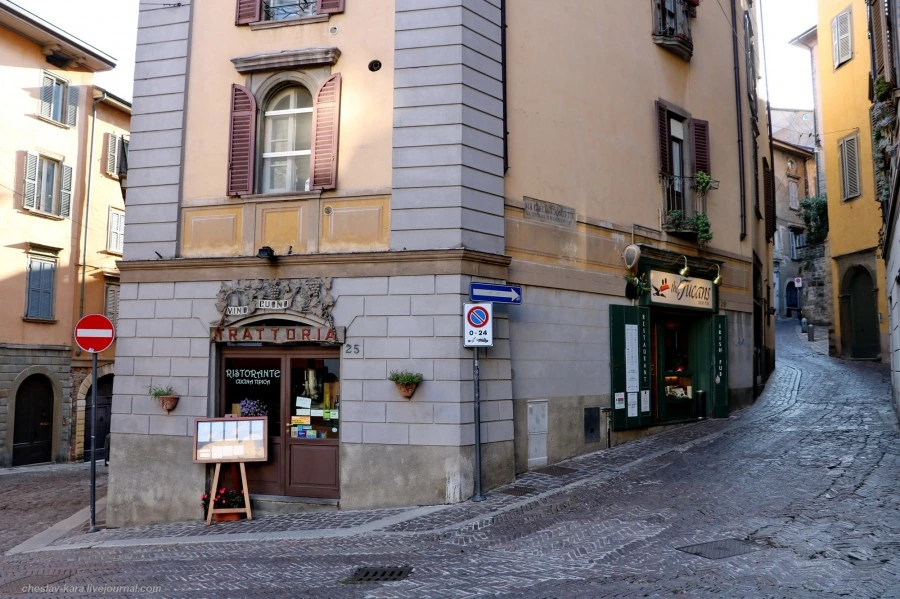
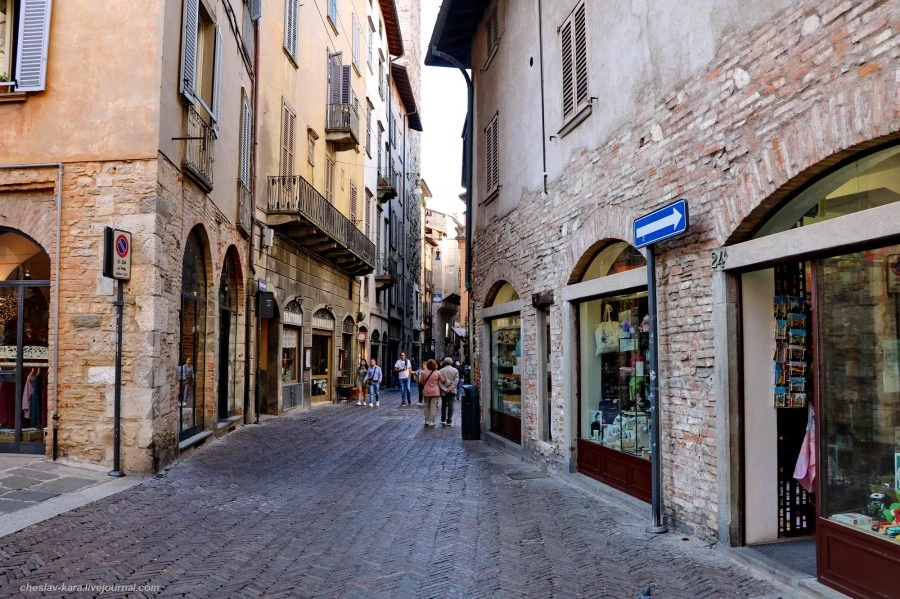
The heart of the Upper Town is the Old Square (). White building - New Palace (), more precisely - New Town Hall. They began to build it in the 17th century, but finished only in 1928. Now inside one of the largest libraries in Italy.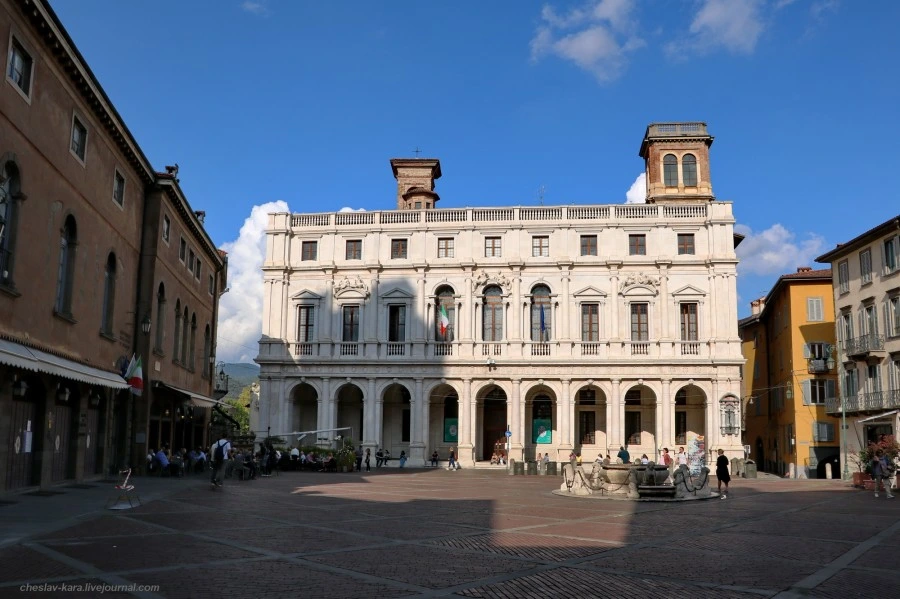
In the center of Piazza Vecchia is the Contarini fountain (), guarded by lions, snakes and sphinxes:
On the other side of the square is the Old Town Hall (). Its current appearance refers mainly to the 15-16 centuries.
Pay attention to the bas-relief with St. Mark's lion - from 1428 to 1796 Bergamo was part of the Venetian Republic.
On the other side of the Old Town Hall is the Bergamo Cathedral - (aka). It was built slowly, started in 1459, mostly finished 230 years later (in 1689), but then it was completed, altered and supplemented for a long time. The facade was completed only in 1889.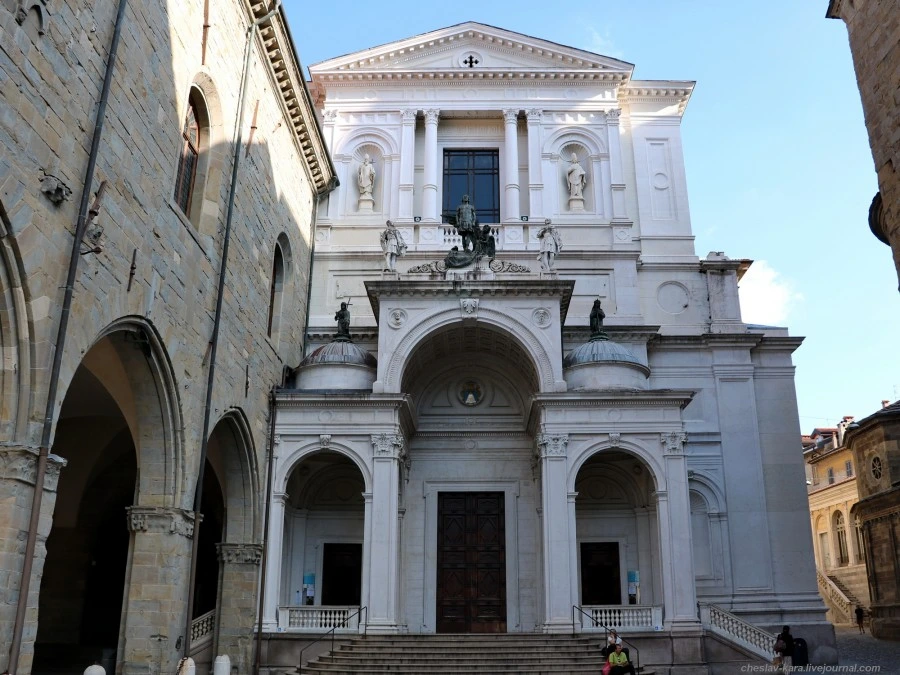
The interior of the cathedral is quite austere, the walls are white with delicate gold ornaments: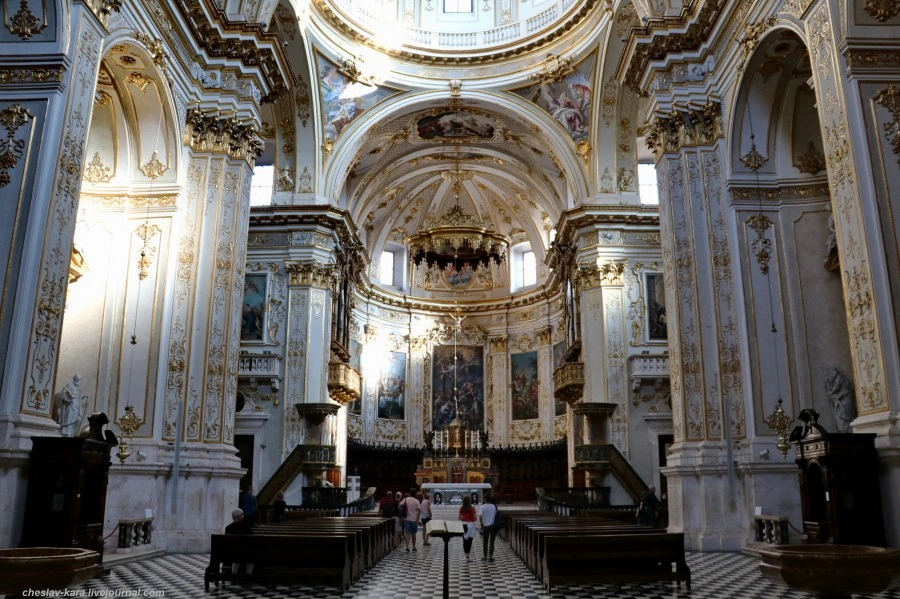
Dome painting: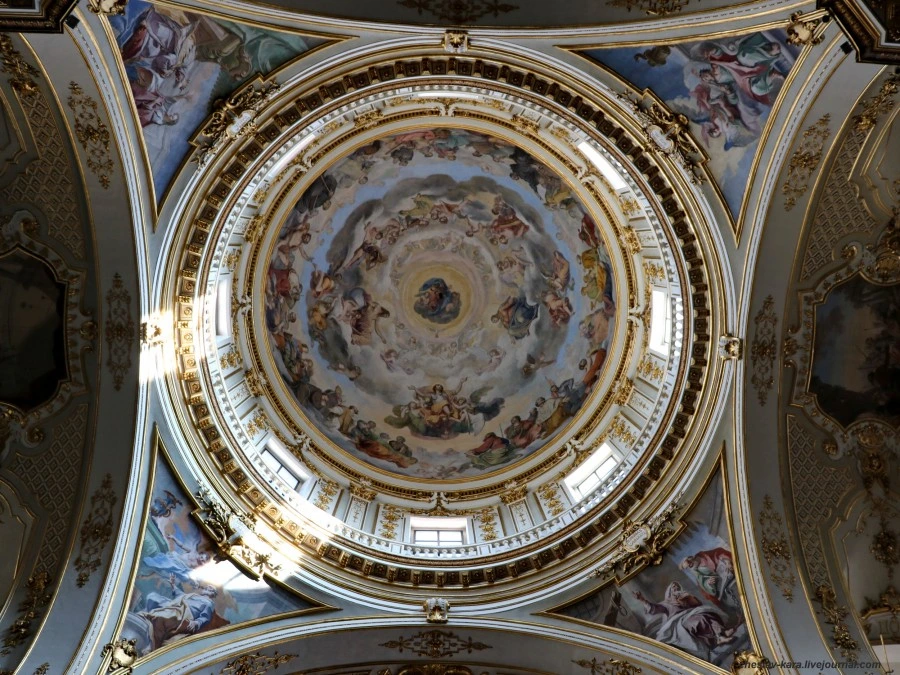
There are much more pompous buildings right next to the cathedral. The first of them is the Colleoni Chapel (, 1472-76), the tomb of the famous Italian condottiere (mercenary commander) of the 15th century Bartolomeo Colleoni.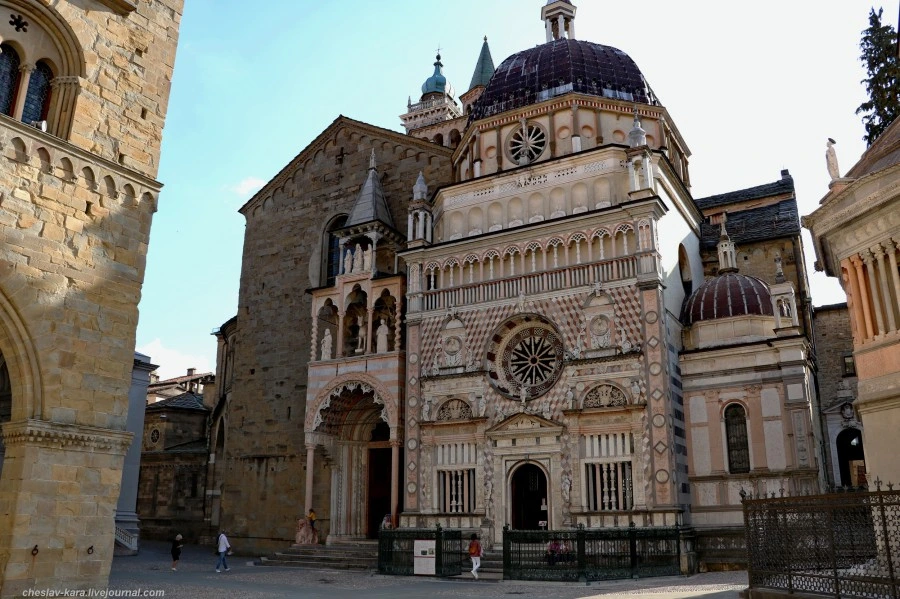
It features a richly decorated interior, including a life-size gilded equestrian statue of the said condottiere. Unfortunately, taking pictures inside is prohibited.
Behind the chapel is the Basilica of Santa Maria Maggiore (the building itself is mostly 12th century, interior - late 16th-early 18th centuries).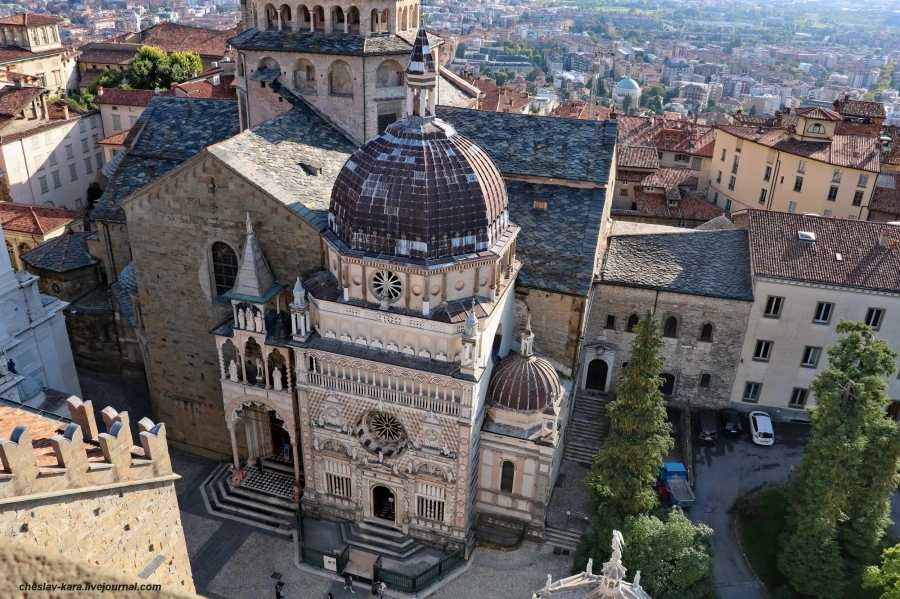
On the left is the entrance to Santa Maria Maggiore, at the end of the square there is a baptistery built in 1340 inside this church. In 1661, it was dismantled and restored only in the 19th century, already under the open sky.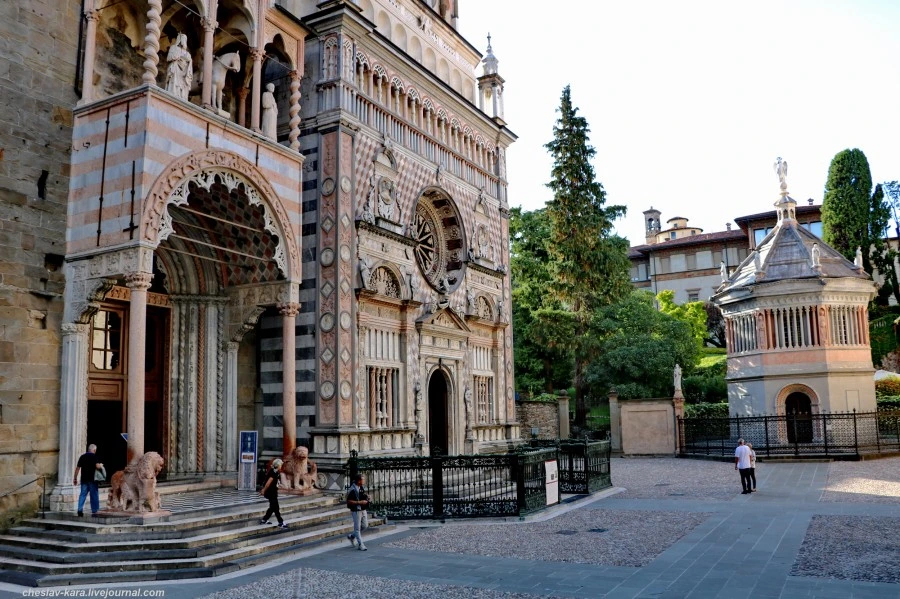
The interior of the basilica is striking: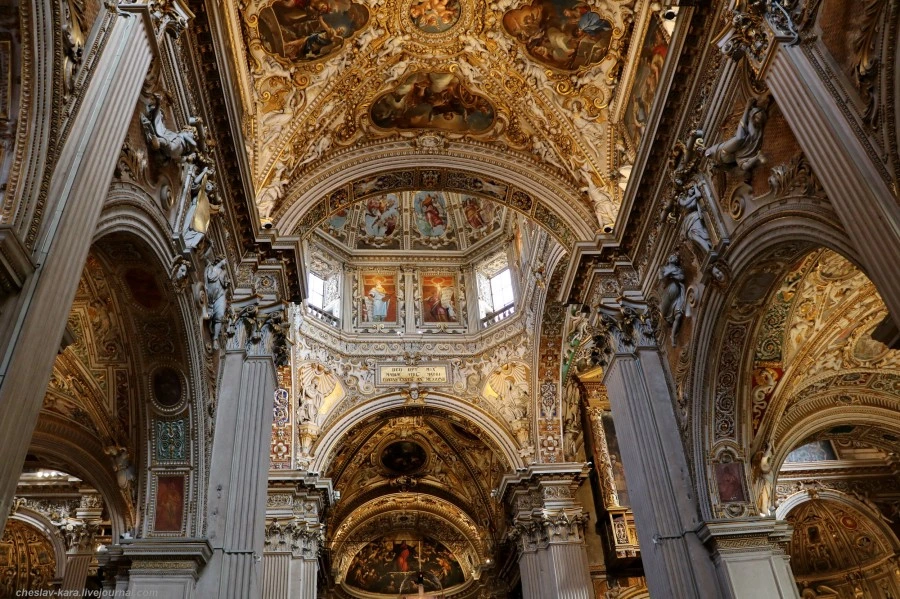
Few places elsewhere will see decor as rich as harmonious.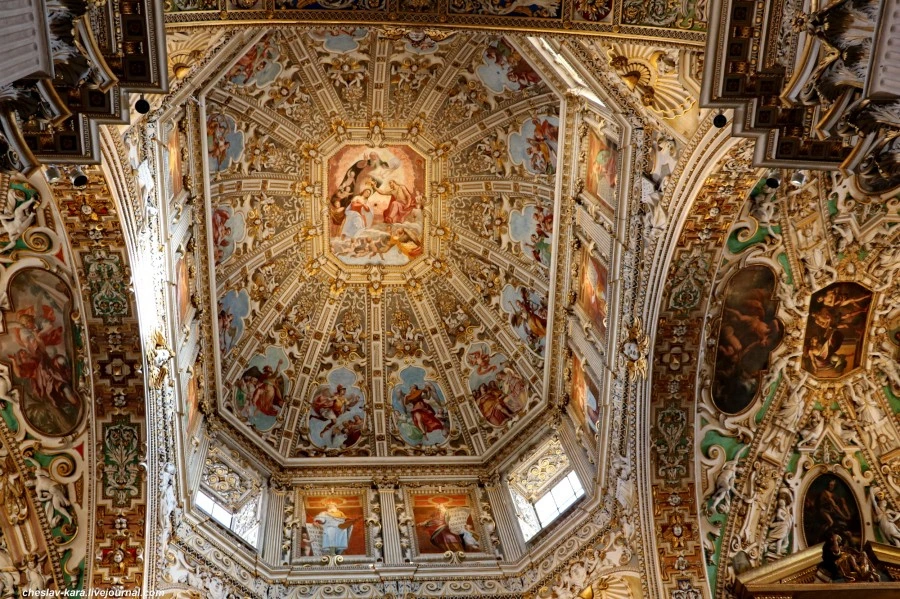
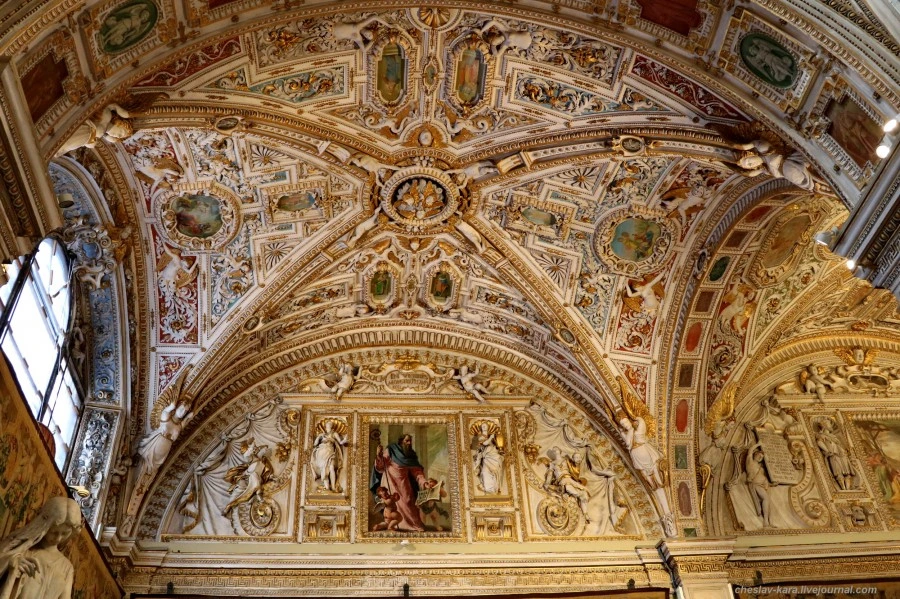
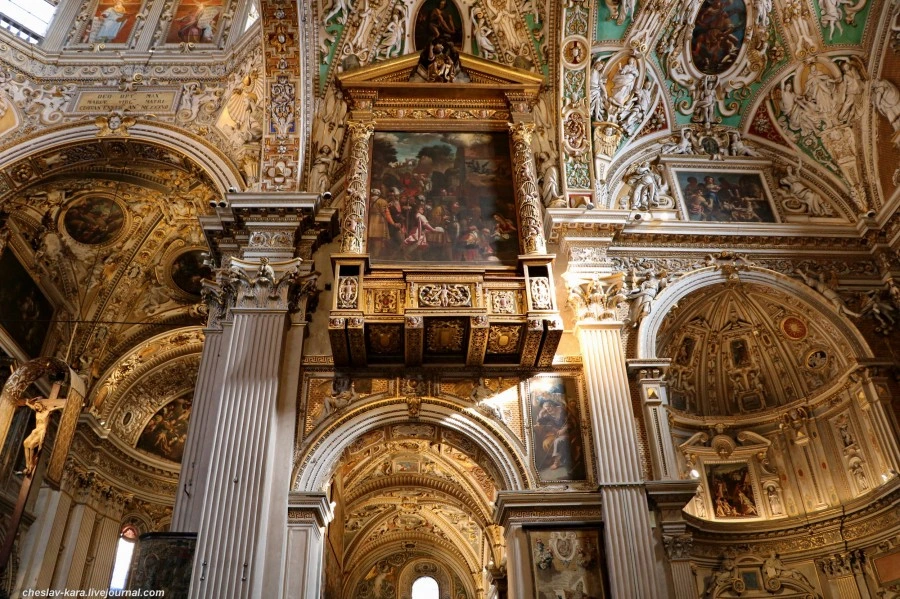
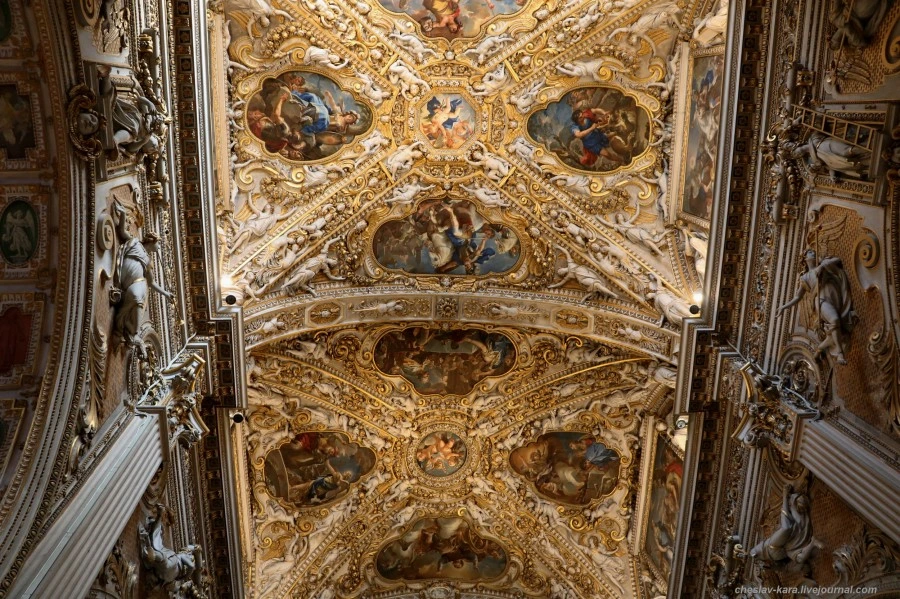
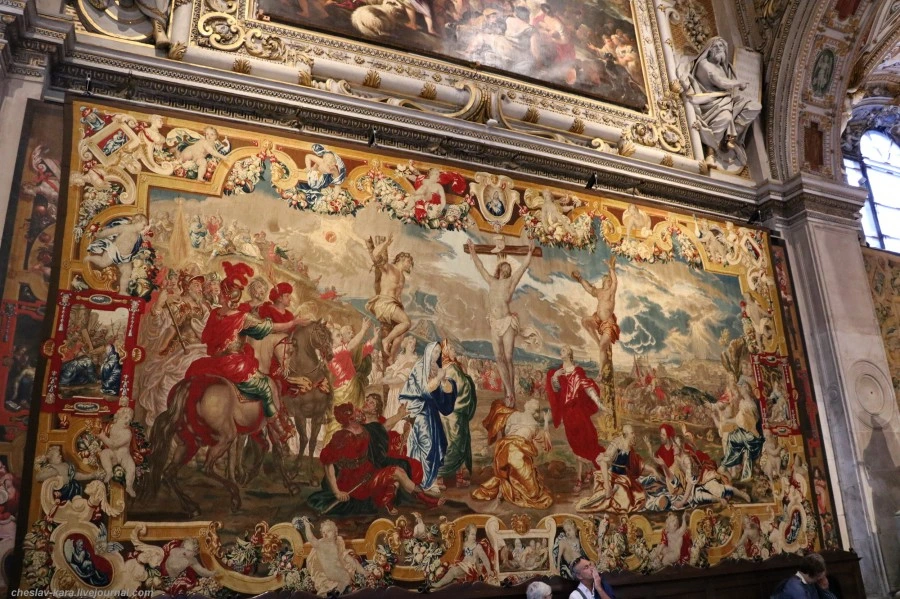
Nearby is the Civil Tower (aka). Erected in the 11th century, later it was completed and by the 16th century it reached a height of 57 meters, becoming the highest in the city. Since 1656, a bell has been placed on it, the ringing of which at 10 o'clock in the evening announced the closure of the city gates. Now, of course, the gate is not closed, but the bell still rings every evening.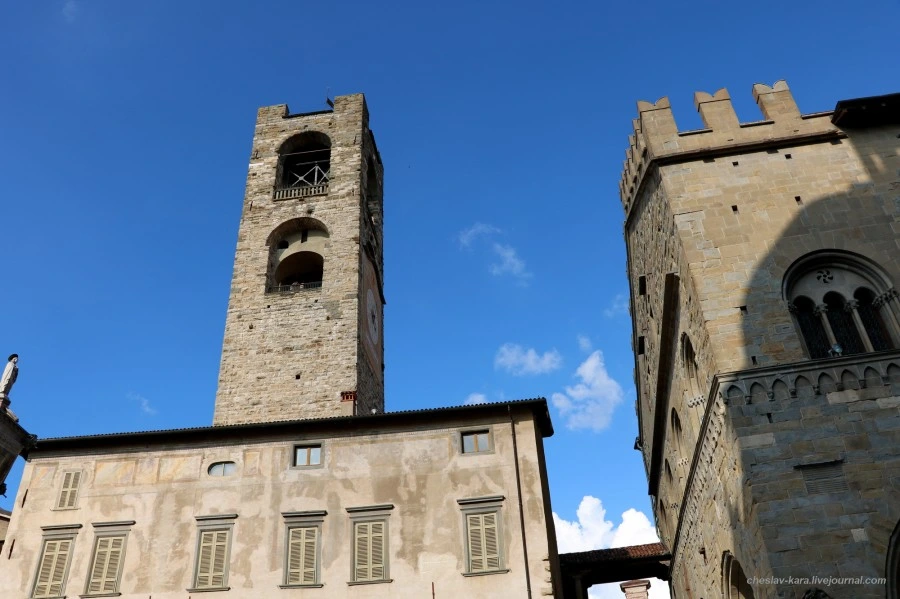
You can climb the tower and look at the city from above.
In the center of the frame, behind the trees, you can see the Rocca fortress, where we were recently, to the right and closer - the tower: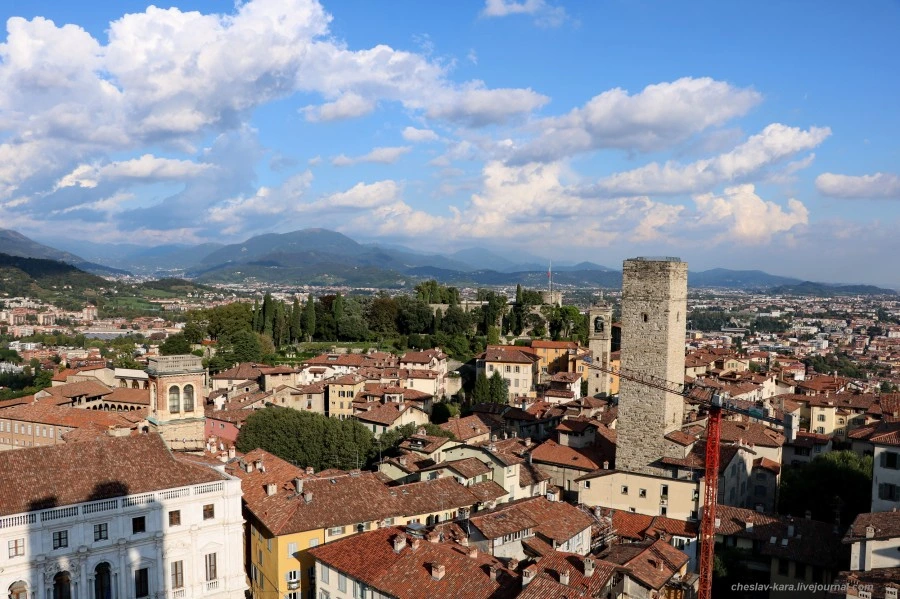
On the left - the dome of the Cathedral, on the right - the spire and bell tower of the Basilica of Santa Maria Maggiore: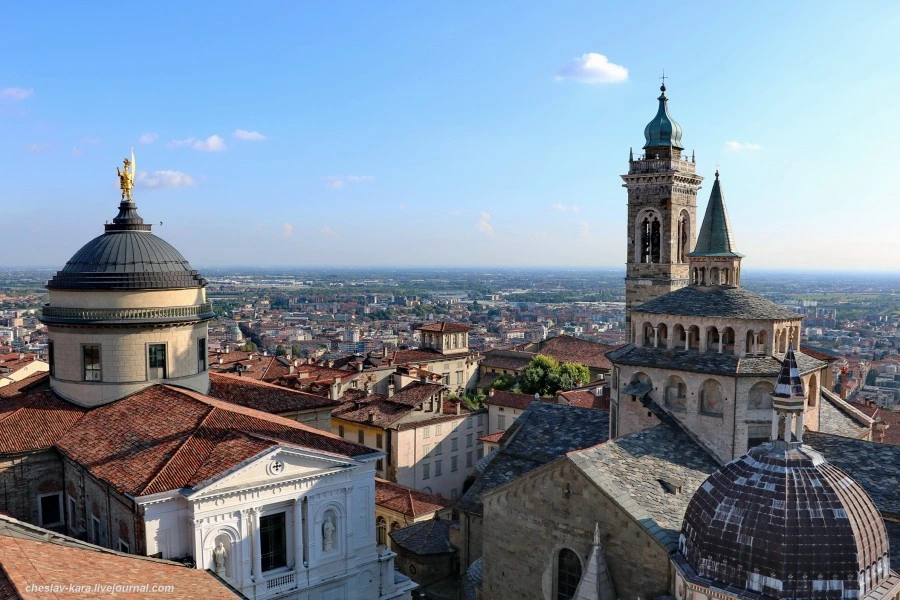
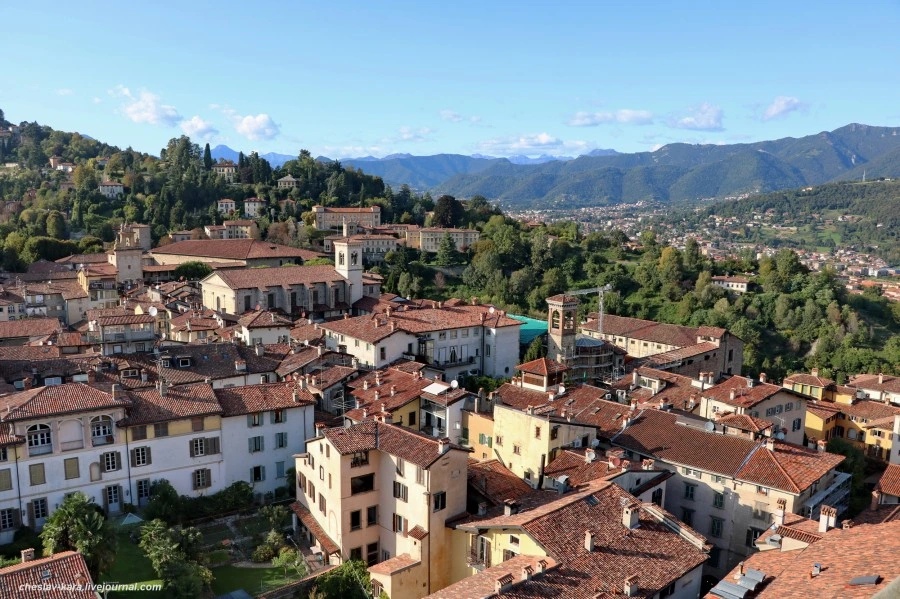
In general, Bergamo has a lot of things worth seeing, but alas, it's time to return to Milan.

Let's go there (38 photos, October 2019):
You can get to the Upper Town from the railway station by bus N1, or you can also walk: to the lower station of the funicular - 1.2 km in a straight line, without turning anywhere.
Chitta Bassa (Lower City):

About halfway there is the Church of Saints Bartholomew and Stephen (, 1613-42):

The church has a beautiful baroque interior, but the lighting inside is extremely poor:

The ceiling is decorated with a huge fresco:

Post Office:

Lower station of the funicular Chitta Alta (; on the opposite side of the Upper Town there is another funicular - Funicolare S. Vigilio)

If you have already bought and activated a bus ticket, then you can also go to the funicular along it. If not, tickets are sold at the box office (it was closed), or in the machine (it was not possible to get any adequate response from him), or in a cafe nearby - by the bartender.
The length of the path is about 200 meters, there are two independent cabins:

After leaving the upper station of the funicular, you can go either to the right - to the fortress, or straight - to the center.

Let's go right first.

The fortress (which simply means "Bergam rock") was erected in 1331-36. She took part in many armed conflicts up to the 19th century. Completely renovated in 1927-1933.

Next to the tower, on the observation deck, there is an exposition of Italian artillery pieces from the period of the First and Second World Wars.

Read more about these guns here.
There is also a well-preserved self-propelled gun Semovente da 75/18 M42 from WWII times (detailed story here).
The fortress is small, almost rectangular in plan, measuring about 35 by 50 meters, the only round tower is located in the southeast corner.

Inside, in the premises of the former barracks, there is the Museum of Resorgimento (the war for the unification of Italy). The museum is small and not particularly interesting for our people, but a ticket to it gives an opportunity to go to the walls of the fortress.
In addition to the barracks-museum, inside the fortress there is only the chapel of St. Euphemia ().

The walls and tower of the fortress offer a wonderful view of the province of Lombardy and the city of Bergamo itself.
View to the north: the foothills of the Alps are visible, on the left - the fortress wall:

East view:

Southwest view, towards the historic center of the Upper Town:

West view:

We leave the fortress, go to the center:



The heart of the Upper Town is the Old Square (). White building - New Palace (), more precisely - New Town Hall. They began to build it in the 17th century, but finished only in 1928. Now inside one of the largest libraries in Italy.

In the center of Piazza Vecchia is the Contarini fountain (), guarded by lions, snakes and sphinxes:

On the other side of the square is the Old Town Hall (). Its current appearance refers mainly to the 15-16 centuries.
Pay attention to the bas-relief with St. Mark's lion - from 1428 to 1796 Bergamo was part of the Venetian Republic.

On the other side of the Old Town Hall is the Bergamo Cathedral - (aka). It was built slowly, started in 1459, mostly finished 230 years later (in 1689), but then it was completed, altered and supplemented for a long time. The facade was completed only in 1889.

The interior of the cathedral is quite austere, the walls are white with delicate gold ornaments:

Dome painting:

There are much more pompous buildings right next to the cathedral. The first of them is the Colleoni Chapel (, 1472-76), the tomb of the famous Italian condottiere (mercenary commander) of the 15th century Bartolomeo Colleoni.

It features a richly decorated interior, including a life-size gilded equestrian statue of the said condottiere. Unfortunately, taking pictures inside is prohibited.
Behind the chapel is the Basilica of Santa Maria Maggiore (the building itself is mostly 12th century, interior - late 16th-early 18th centuries).

On the left is the entrance to Santa Maria Maggiore, at the end of the square there is a baptistery built in 1340 inside this church. In 1661, it was dismantled and restored only in the 19th century, already under the open sky.

The interior of the basilica is striking:

Few places elsewhere will see decor as rich as harmonious.





Nearby is the Civil Tower (aka). Erected in the 11th century, later it was completed and by the 16th century it reached a height of 57 meters, becoming the highest in the city. Since 1656, a bell has been placed on it, the ringing of which at 10 o'clock in the evening announced the closure of the city gates. Now, of course, the gate is not closed, but the bell still rings every evening.

You can climb the tower and look at the city from above.
In the center of the frame, behind the trees, you can see the Rocca fortress, where we were recently, to the right and closer - the tower:

On the left - the dome of the Cathedral, on the right - the spire and bell tower of the Basilica of Santa Maria Maggiore:


In general, Bergamo has a lot of things worth seeing, but alas, it's time to return to Milan.

